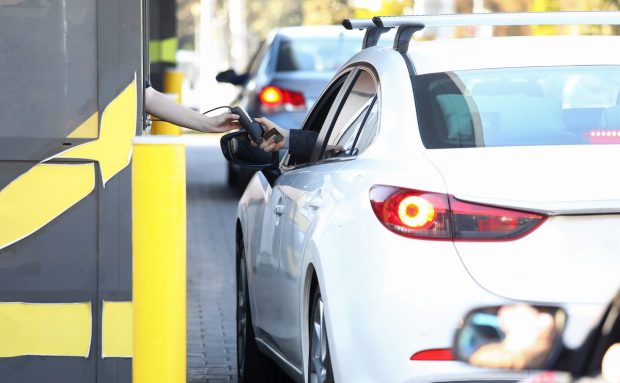Convenience Stores Turn to Drive-Thru to Boost Loyalty

As convenience retailers look to offer the quickest, easiest shopping experience, drive-thru can be key.
GetGo Cafe + Market, the convenience store subsidiary of, Giant Eagle, a grocery chain with more than 400 stores across five states, opened its first newly built location with a drive-thru lane.
“This location is unique as it’s our first GetGo built from the ground up to feature a drive-thru,” Brandon Daniels, GetGo public relations manager, said in an emailed statement. “We’re all about fresh food, and with this drive-thru lane, we’re thrilled to bring the Mentor community our delicious made-to-order menu with the convenience you’d expect from GetGo.”
Across the industry, retailers are turning to the drive-thru channel to further deliver on their promise of convenience, in turn driving frequency and loyalty. For instance, East Coast convenience store chain Wawa, which has nearly 1,000 locations, is undergoing an effort to double its footprint by the end of the decade with a focus on opening more drive-thru locations, as CEO Chris Gheysens told the Philadelphia Business Journal last year. Plus, just a couple years ago, convenience store giant 7-Eleven announced its first drive-thru location in Dallas, Texas.
Indeed, convenience stores believe that offering the quickest, easiest-to-use purchasing channels are key to customer loyalty, according to data from PYMNTS’ study “Big Retail’s Innovation Mandate: Convenience and Personalization,” created in collaboration with ACI Worldwide.
The study, which drew from a survey of 300 retailers across the United States and the United Kingdom, found that 77% of convenience stores and pharmacies said consumers would be very or extremely likely to switch merchants if they were not offered the ability to order products for delivery. Plus, 63% said the same of alternative payment methods in-store and 54% of self-service kiosks.
Plus, as convenience retailers increasingly prioritize their food offerings as a way to gain share from quick-service restaurants (QSRs), drive-thru is key to their ability to compete.
“The convenience store model has been transitioning toward a foodservice-focused business model for some time now. C-stores have improved their foodservice menus,” Howland Blackiston, principal at King-Casey, highlighted at the National Association of Convenience Stores’ annual show in 2021, noting that prepared foods have much higher average profit margins than general merchandise. “So far so good, however… Merely upgrading [food and beverage (F&B)] leaves convenience trends and consumer trends unaddressed.”
A study cited in PYMNTS’ Order to Eat Tracker noted that nearly 75% of Americans had used a restaurant drive-thru since the start of the pandemic, up 43% from April 2020.
In the U.S., about half of all restaurants offer drive-thru pickup, according to data from PYMNTS’ 2022 Restaurant Friction Index. The study, which drew from a survey of more than 500 managers of QSRs and full-service restaurants (FSRs) across the U.S., found that almost two-thirds of those that do not offer this ability plan to invest in adopting the feature in the future.
“There’s a ton of press of people wanting more drive-thru,” Rajat Suri, founder and CEO of voice, vision and touch automated technology firm Presto, told PYMNTS’ Karen Webster in an interview. “The funny thing is casual dining is now experimenting with drive-thrus. … It makes a lot of sense for them to have that flexibility and that option.”
He cited the examples of fast-casual giant Chipotle, of casual dining chain Applebee’s and of Wawa as major brands that previously had no designs on the channel that have recently been investing in new drive-thru capabilities.
For all PYMNTS retail coverage, subscribe to the daily Retail Newsletter.
